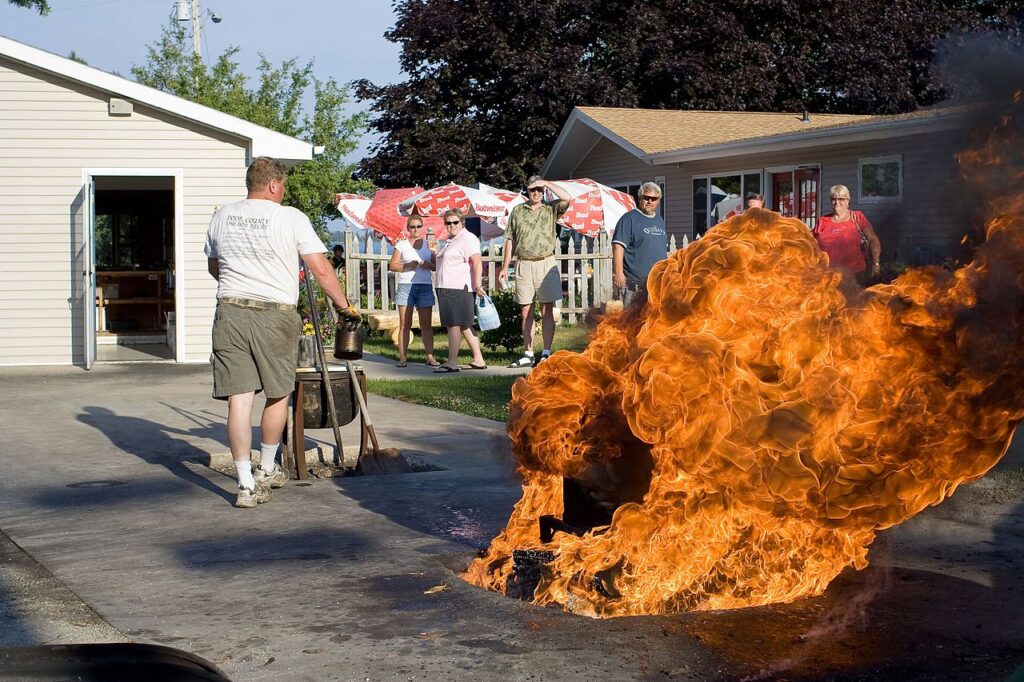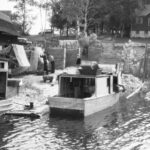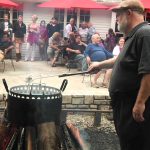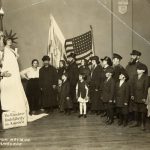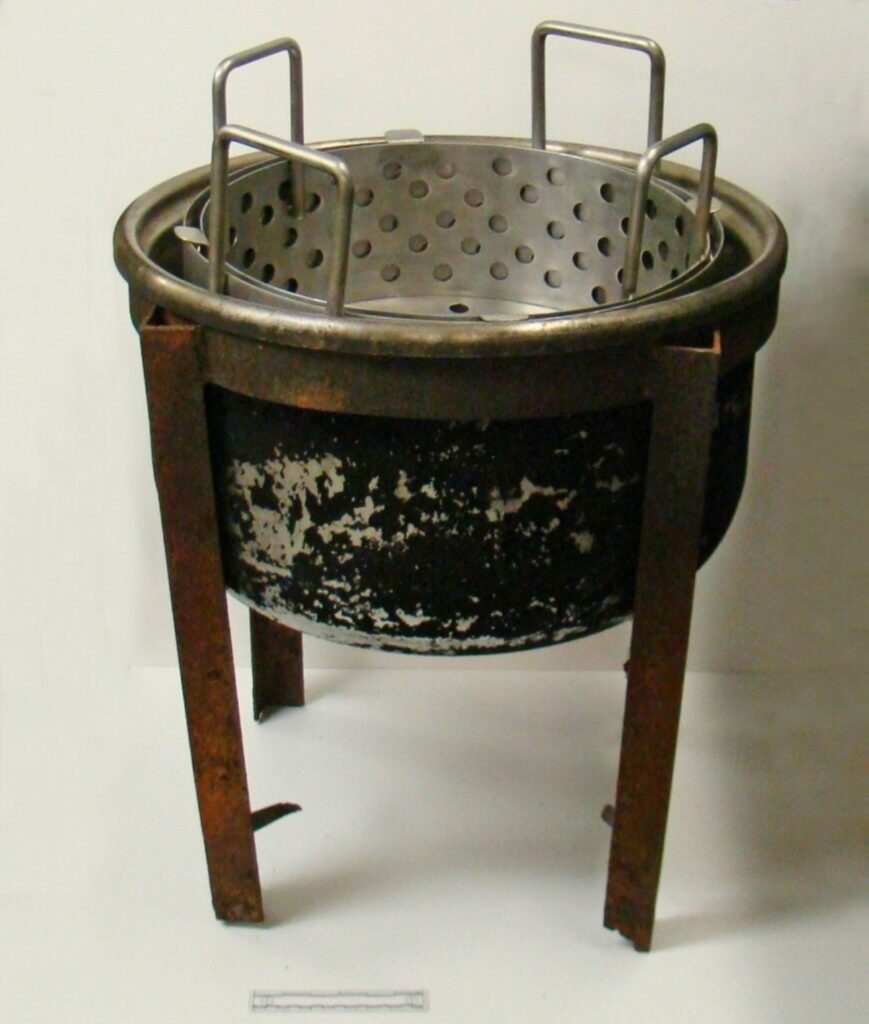
Door County may be the only place in the world where you can expect to be fed a meal that was cooked in a washing machine. The area’s earliest history surrounds fishing, and later tourism which, every year, brings in over $500 million in the current day. Fish boils embody the spirit of both the fishing and tourism industries, while providing a unique experience that cannot be found anywhere else.
The fish boil tradition began in the late 1890s, with its origin garnering intense debate. One attributes them to Scandinavian fishermen who, in an attempt to feed their crew, would often bring potbelly stoves onto their boats and boil fish directly on the deck. The other story surrounds loggers on the peninsula, who held boils to feed their camp after an intense day of manual labor. The lack of clarity adds to the legend of the fish boil, with the only certainty concerning the need to feed large groups of people. The tradition lost steam in the early decades of the twentieth century, but regained momentum in the churches and men’s clubs of the 1930s and 1940s as a way to bring together the community.
Though Lawrence and Annette Wickman purchased Viking Grill in Ellison Bay in 1949, but did not host public fish boils until the summer of 1961. Lawrence, the family’s patriarch, often volunteered at fish boils for local events, and was inspired to begin hosting them at the restaurant to bring the community together. When Dan Peterson purchased Viking Grill in 1984, and made it clear that he intended to continue on with the fish boil tradition, which he did until he sold the restaurant in 2022.
This Fish Boil Kettle, donated by the Viking Grill to the Wisconsin Historical Society, was used by the restaurant from 1990 to 2009 when it was replaced by a version capable of cooking for a larger number of customers. It consists of four separate parts – a stand, a cauldron, and two baskets which function as strainers. The stand holds the cauldron above the flames of the boil and shows the signs of heavy use, resulting in a layer of soot, and the kettle’s ability to stand on only three legs at a time. The cauldron is the most unique part of the object, as it was originally manufactured as a drum for a laundry machine. The two baskets, which held the food as it cooked, are pierced with holes and remain in great condition compared to the other parts.
The person in charge of a fish boil is given the moniker: Masterboiler. Masterboilers must have immense experience in running fish boils, and must simultaneously cook the food and maintain safety. The process begins by filling the cauldron with 20 gallons of water and three pounds of salt. Next, the larger basket, filled with potatoes, enters the pot when the water boils. The other basket gets added after about twenty minutes, with (traditionally) whitefish, and onions are added for the last two or three minutes. The boilover, the main spectacle, follows when kerosene is poured over the flame to burn off oils and fats that have risen to the surface of the kettle. Once the boilover passes, the baskets are removed from the pot, and the meal can be served to the patrons. A traditional meal consists of whitefish, red potatoes, onions, a lot of butter, rye bread, coleslaw, and Door County cherry pie for dessert.
Written by Jack Cultra, April 2024.
Sources
Coulson, Andy. “Traditional Door County Fish Boils.” The White Gull Inn., https:// whitegullinn.com/fish-boil-details/. (Accessed 25 March 2023).
Destination Door County. “Door County Fish Boils.” Destination Door County. https://www.doorcounty.com/experience/fish-boils/. (Accessed 24 March 2023).
Door County Today. “The Famous Door County Fish Boil.” Youtube. 15 March 2012. https://www.youtube.com/watch?v=CZNsoapM6rA. (Accessed 24 Mar. 2023).
Gilmore, Janet C. “Sagamité and Booya: French Influence in Defining Great Lakes Culinary Heritage.” Material Culture Review60(1). Fall 2004. https://journals.lib.unb.ca/index.php/MCR/article/view/18000.
Hachten, Harva and Terese Allen. The Flavor of Wisconsin: An Informal History of Food and Eating in the Badger State. Madison: Wisconsin Historical Society Press, 2009.
Small, Nyla Wickman. “Door County’s Famous Fish Boil.” Originally published in Door County Almanak (3). Sister Bay, Wisc.: Dragonsbreath Press, 1985. Republished online by Door County North. https://doorcountynorth.org/door-countys-famous-fish-boil/. (Accessed April 2023).
Wisconsin Historical Society “Fish boil kettle with stand and baskets used at Viking Grill in Ellison Bay, Wisconsin c. 1990-2009.” Catalog Report.
